The plastic figure below is one of the Bible’s three wise men. I found it on the south coast of Cornwall, in a strandline tangle of seaweed and plastic left by the night’s high tide. For almost a year I had no idea what it was, until fellow beachcomber @not_in_new_york suggested it might be a French ‘fève’. She was right, so rather than journeying from the East, my wise man may well have crossed the Channel.
‘Fève’ is from ‘fava bean’ (or broad bean), the original precursor to these plastic trinkets – which in France are hidden inside ‘Gallette des Rois’ cakes to celebrate the Epiphany.
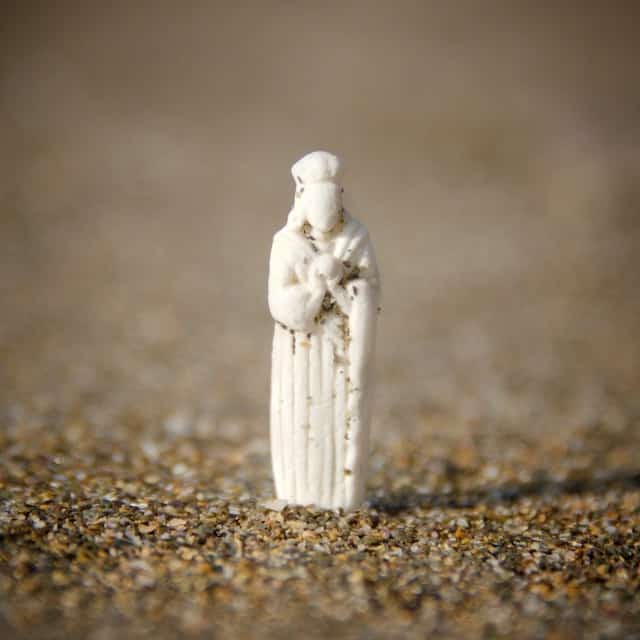
Many believe the custom’s origins lie in the Roman festival of Saturnalia, which took place around the winter solstice. During these pagan celebrations, the usual social order was overturned, with slaves allowed to disrespect and feast with their masters. A ‘king of the day’ was also elected by chance, quite possibly using a fava bean hidden in the food (in ancient Rome the beans were used as voting tokens).
As Christianity spread through Europe, existing pagan festivals were often recast by the Church as their own. In time, midwinter celebrations shifted from the solstice to the 25th December, with ‘Christmastide’ continuing until Epiphany or Twelfth Night. Across medieval Europe, that day’s festivities included a cake and a ‘mock king’ ceremony.
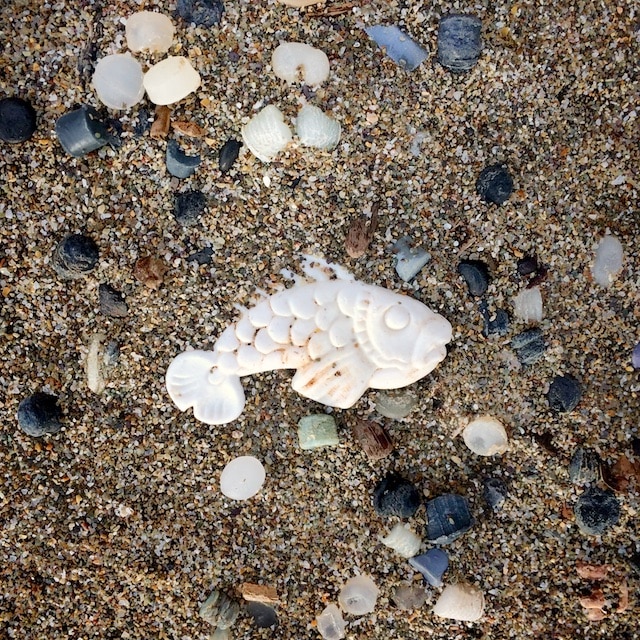
In Tudor England people baked a Twelfth Cake, including a hidden bean to appoint a Lord of Misrule or ‘King of the Bean’. Other objects might also be hidden inside the fruitcake: a pea for the queen, a clove for the villain, a twig for the fool and a rag for the slut (at the time meaning slovenly, not promiscuous).
By Victorian times, Twelfth Night celebrations were falling out of fashion and the hidden charm shifted to the Christmas pudding. Usually a silver sixpence or thruppenny bit, this might also be a ‘spinster’s thimble’, a ‘bachelor’s button’ or a silver ring, offering marital predictions for the coming year. Through my own 1970s and 80s childhood, my nan always hid a sixpence in the Christmas pudding (although she’d rig it so this was found by a child, and we had to give it back).
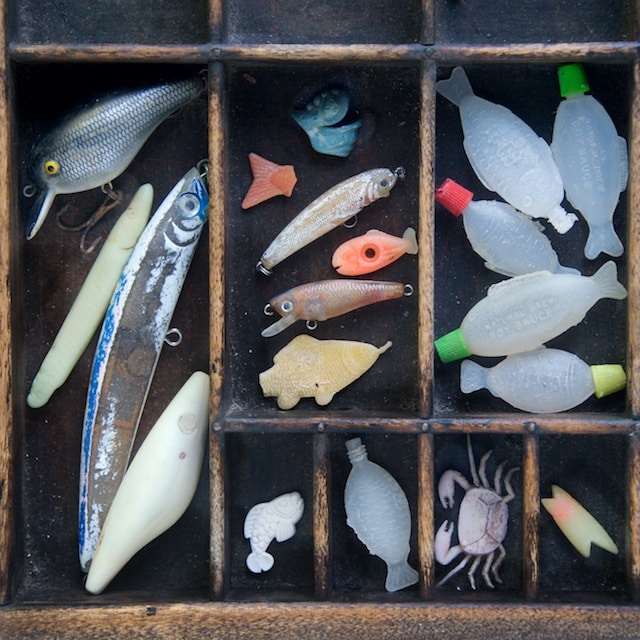
In France, though, they continued to celebrate the Epiphany with a ‘Galette des Rois’, or ‘Kings’ Cake’. Around the 1870s the embryo-shaped fava bean – now a symbol of Christ – was replaced by a porcelain baby Jesus, and later the three kings and other religious symbols and figures. From the 1960s the fèves were also made from plastic. My own flotsam wise man and fish are copies of traditional porcelain fèves, although today the hidden trinkets can be anything from plastic cars to Harry Potter minifigures.
The custom also survives with the King Cake at the festival of Mardi Gras (meaning ‘Fat Tuesday’ as it ends the day before Lent). The fève inside these cakes is often a small plastic baby, symbolising Jesus and sometimes – as at pagan Saturnalia – granting its finder privileges for the day.
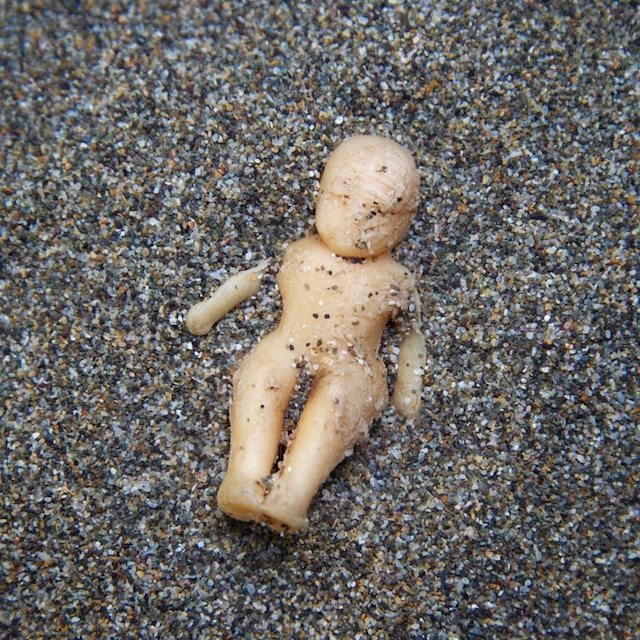
.
Over the years a number of beachcombers and beachcleaners have generously shared their knowledge and helped me identify finds. As well as @not_in_new_york, they include @smartie_lids_on_the_beach and @2minutebeachclean (Instagram), Rob Arnold and @RamePeninsulaBeachCare (Facebook), and @LegoLostAtSea, @JoAtherton and @BeachcombingBB (Twitter). I am grateful!
.

There is more on the ‘Travelling Museum of Finds’ here
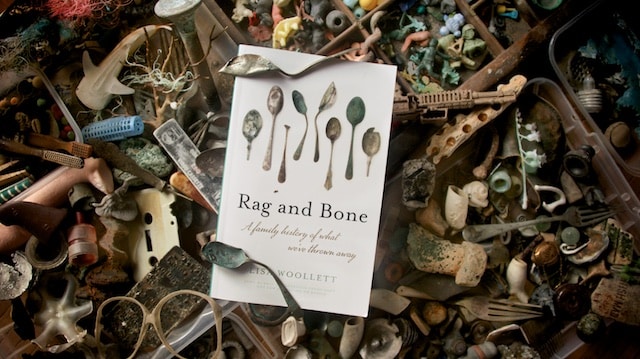
and reviews of Rag and Bone (John Murray, June 2020) here
The hardback is available to pre-order at Waterstones, Blackwells, Foyles and Amazon. Best of all, particularly in these difficult times, do use local independent bookshops. Or try Hive, which allows you to support a local bookshop of your choice.
.
If you’d like to follow the blog please give your details below.
To share the post: